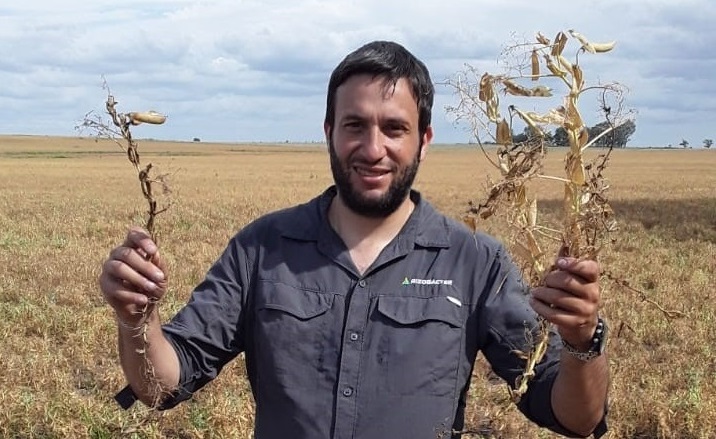
Argentina obtained authorization to export this legume to China, setting up a challenge for national growers. In order to achieve good yields and quality, technicians recommend choosing a well-drained plot and prioritizing early crop care. Seed treatment and inoculation are two strategic practices.
The opening of the Chinese market gives fresh impetus to sowing pea, a winter crop that was already considered as having benefits within the rotation system. Because pea is a short term crop, contributes nitrogen to the soil and requires less water, it provides added benefits to the successor crops and allows, for instance, to sow second-crop soybean or late corn 15 to 20 days in advance.
After seven years of negotiations, Argentina obtained authorization to export this legume to China, the major global consumer, by implementing the corresponding phytosanitary protocols. For the country, this means an opportunity to expand the pea production area and, in turn, improve crop diversification.
According to National Institute of Agricultural Technology (INTA) technicians, the time of sowing is key for this crop. For a good start, it is necessary to choose a plot with good drainage and then treat seeds thoroughly, because fungal complex (mainly Pythium) in the soil generates great seedlings losses.
In this regard, using a broad-spectrum seed treatment formulated with Metalaxil-M, Fludioxinil and Thiabendazole (three active ingredients that are highly effective against soil and seed fungi) is recommended.
Pea is grown mostly in spaced sequences of legumes; essentially, to avoid foliar, stem and root diseases. Since cultivation of this crop is expanding, it is usually introduced in plots that were never planted with this species before.
This situation turns inoculation into a high impact practice because the soils are not massively colonized by Rhizobium leguminosarum biovar viceae, a specific bacterium responsible for the biological nitrogen fixation, in symbiotic association with the pea plant.
By inoculating, nitrogen can be fixed biologically in a more economical way than by applying a nitrogen fertilizer - added to the advantages for cultivation that this widely adopted practice offers. For example, for pea with a 3,000 kg/ha yield, applying 300 kg of urea/ha would be needed. This represents a cost of 120 US$/ha, about ten times more than the value of inoculation.
In inoculation tests conducted by INTA with Rizobacter's Rilegum Pack 203 (which contains inoculant and Maxim Evolution seed treatment), in plots without a history of legumes planting, the inoculant can provide an additional yield of between 1000 and 1100 kg/ha more. In plots with a pea history, the differences in yield due to inoculant contribution can reach 450 kg/ha.
In this year of opportunities for peas, special attention should be paid to early crop care, in order to achieve good yields and not lose quality.
Photo: Gabriel Carini, Head of the Inoculants for Special Crops Line